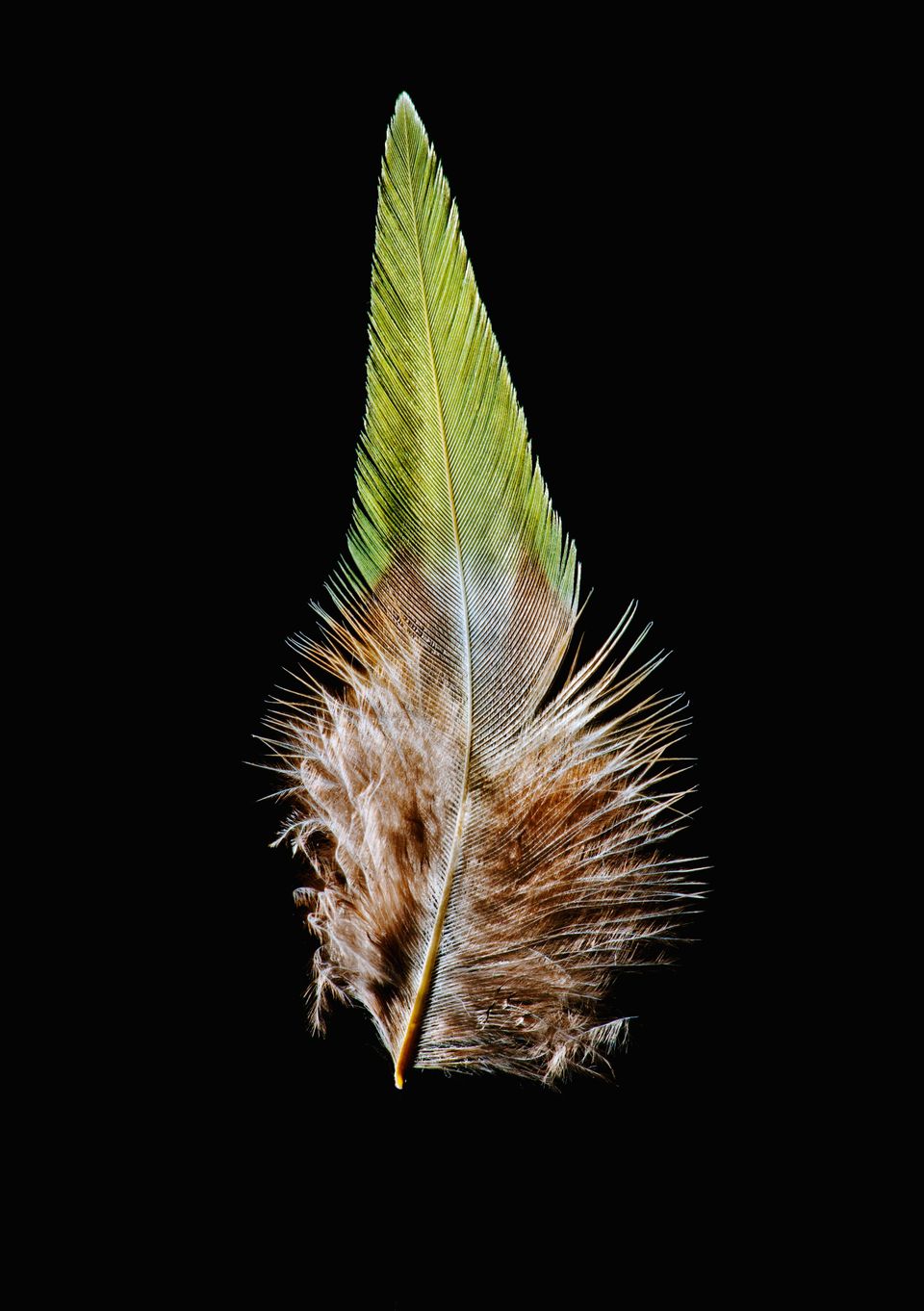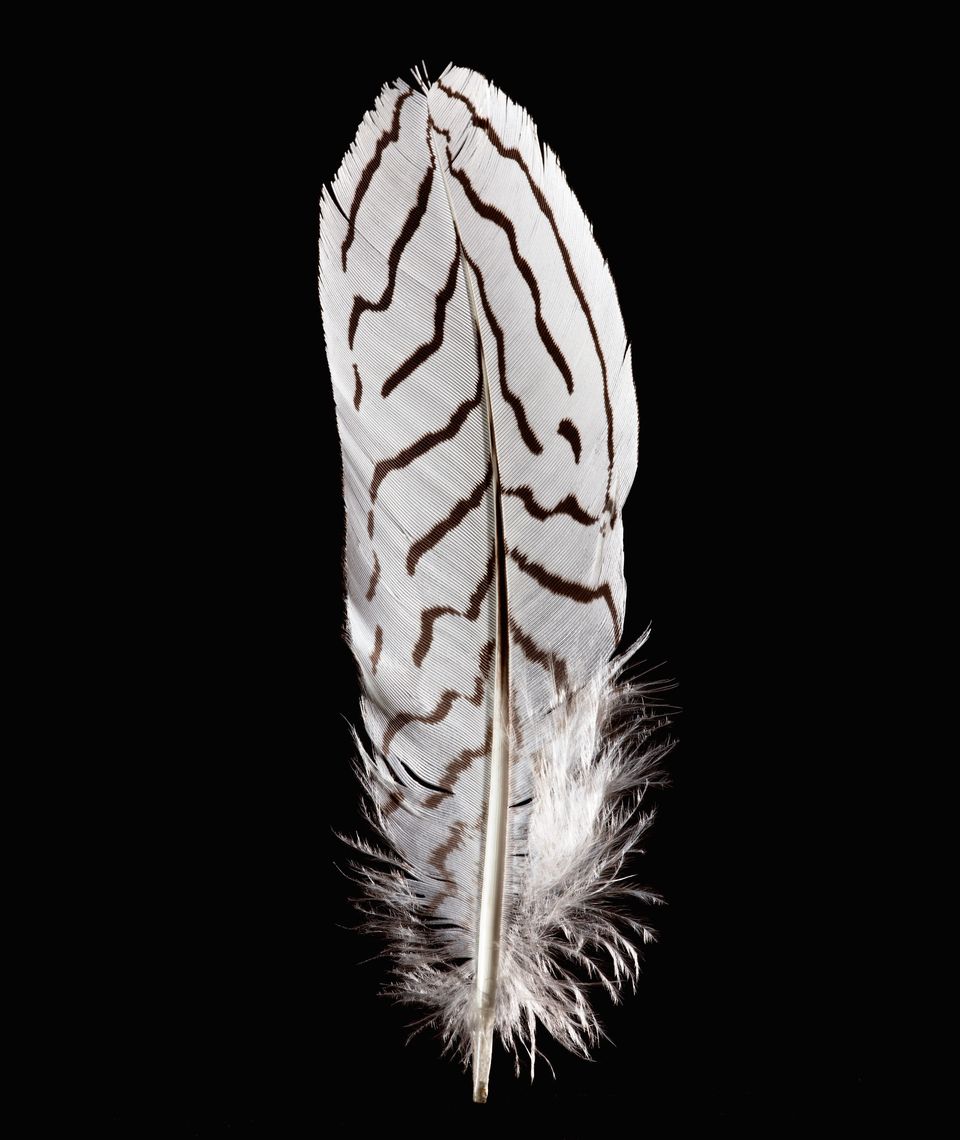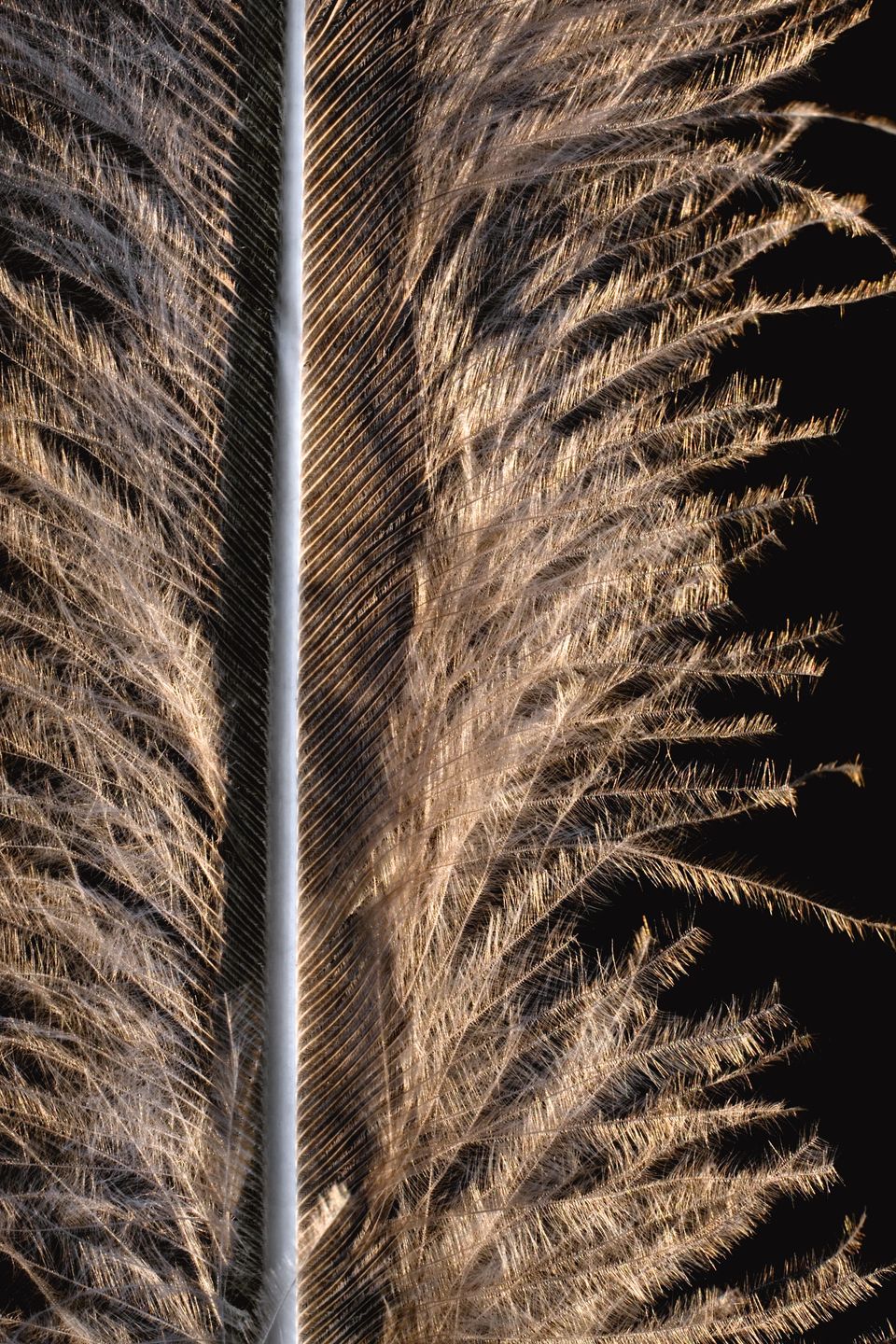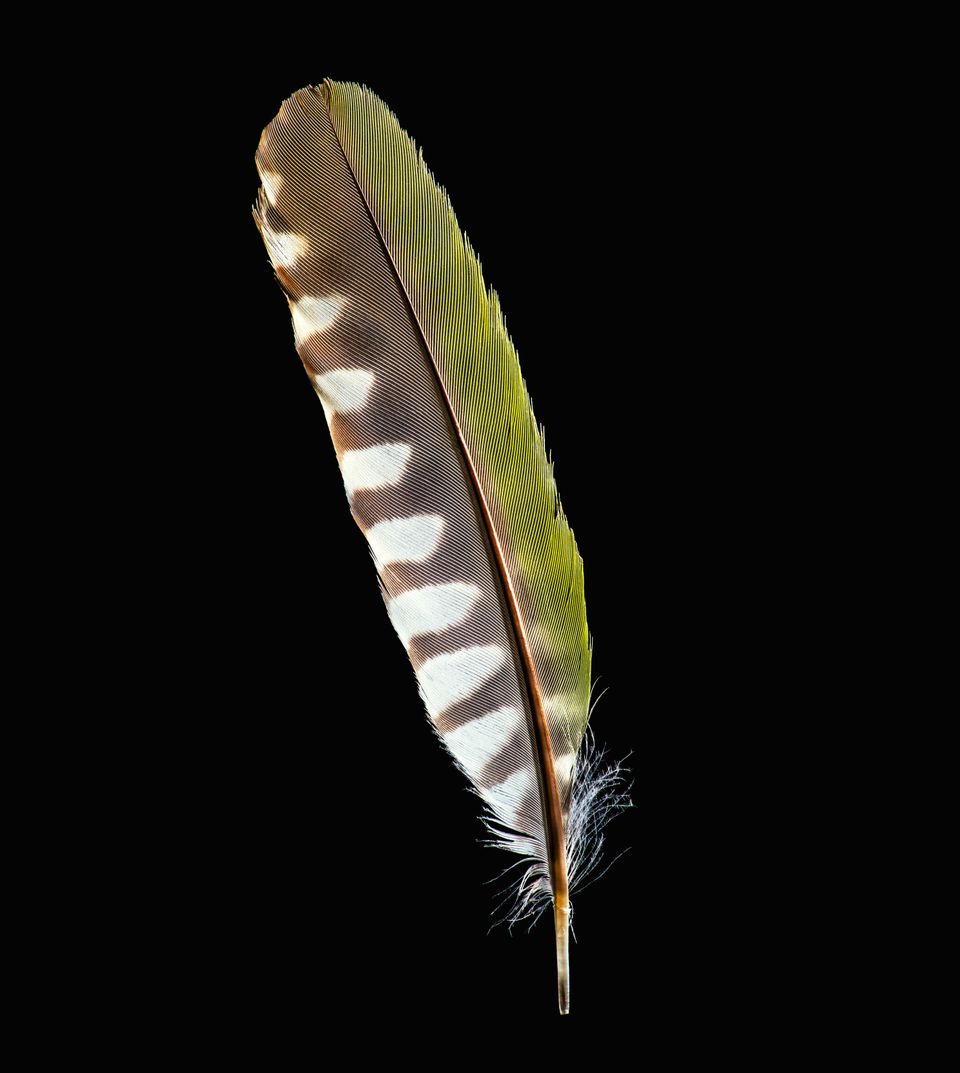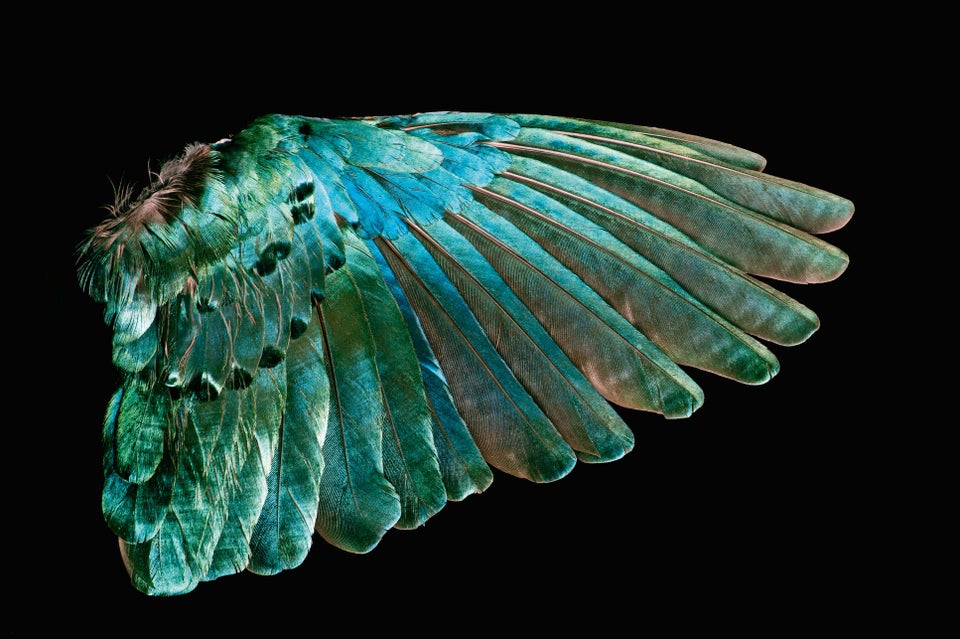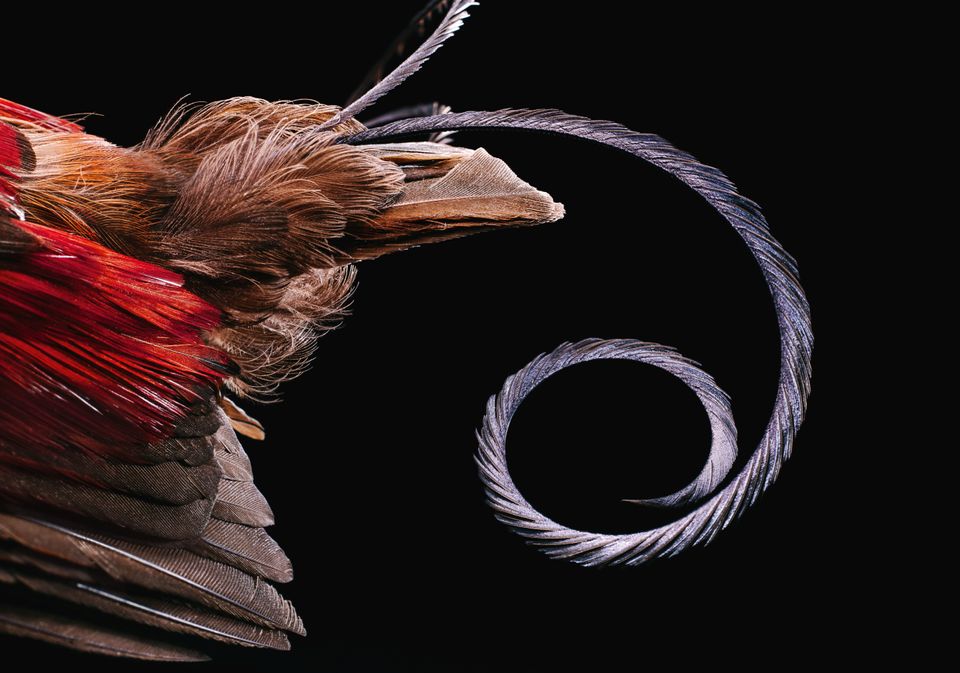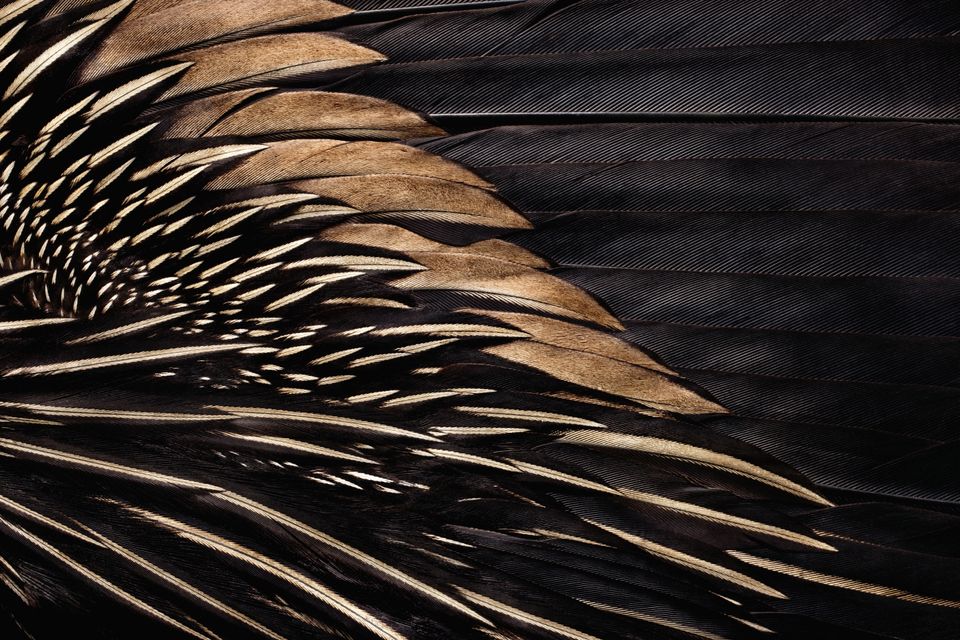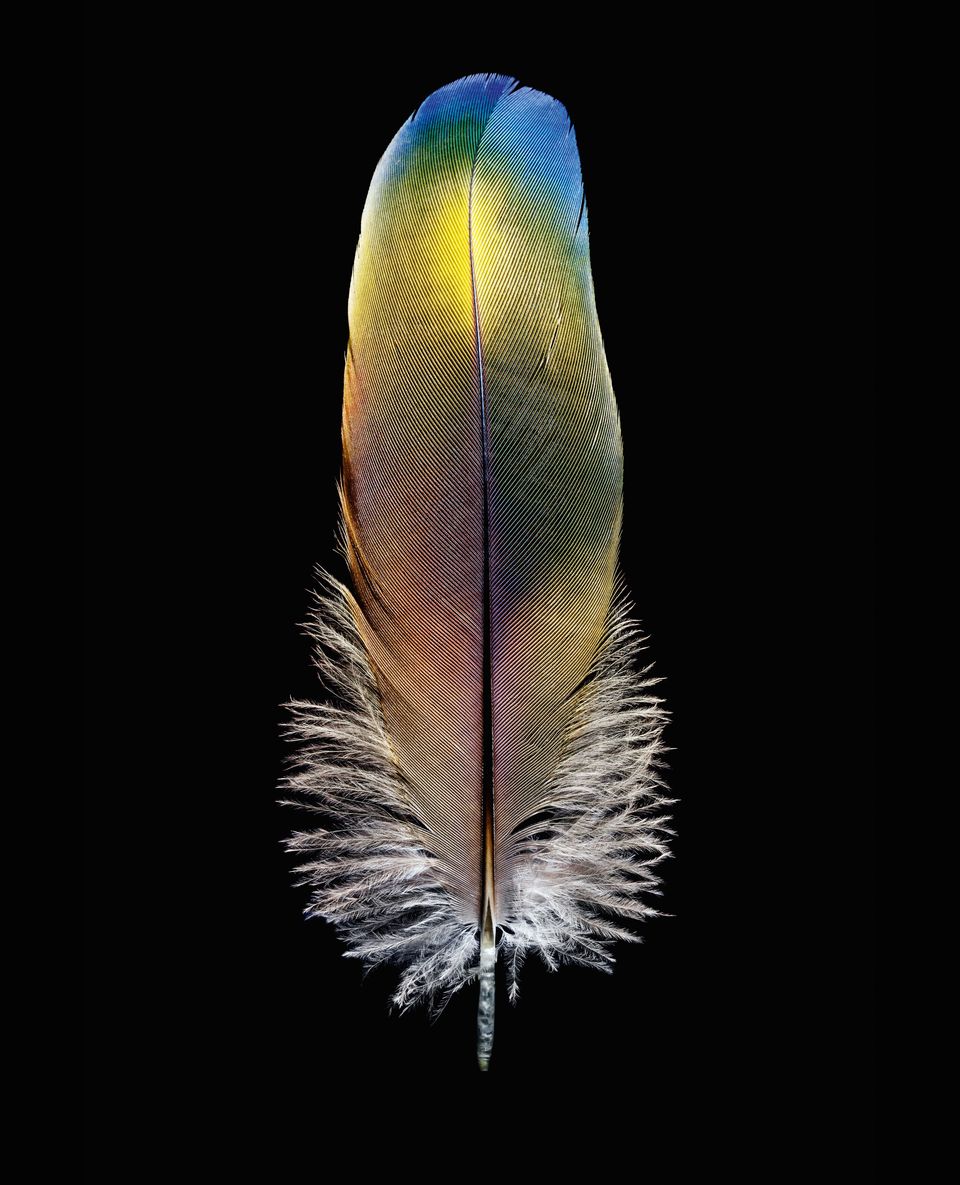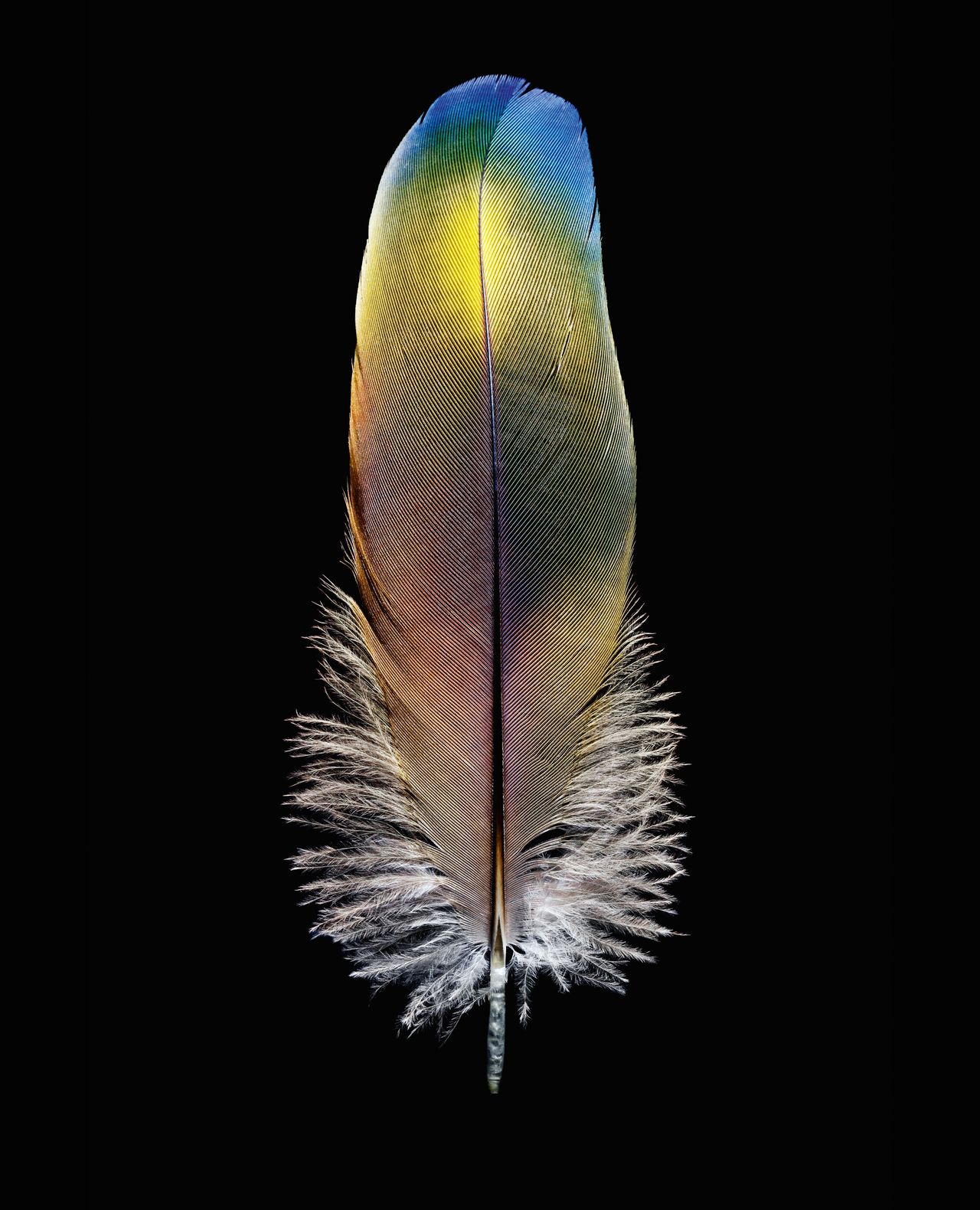A riddle: What’s as intricate as a thumbprint, but as bright as an emerald?
You might’ve guessed a pair of gleaming green eyes, or a leaf in early spring. But you probably didn’t guess another product of nature that’s less often the subject of poetic musings: a bird’s feather.
Calling attention to the singular beauty of the functional objects, National Geographic photographer Robert Clark took intimate portraits of feathers and collected them in a new book, Feathers: Displays of Brilliant Plumage, treating them as subjects worthy of closer examination.
In one of his feather portraits, a fluffy, brown object is topped by a sharp green peak. It’s a blood pheasant’s feather, and, as Clark described, it’s designed not for flying, but for squeezing through tight spaces. In another image, rows of clashing patterns make for a dizzying sight -- leopard-like spots are topped off by a starry expanse and a ribbon-like row of deep, velvety blue. The great argus’s feathers are quite the production; that’s why they’re used to attract mates. As is the King bird-of-paradise’s plumage, which looks more like a copper-and-gem sculpture than something that could occur in nature, and indeed, Clark writes that its feather “serves non-mechanical purposes.”
While the descriptions of the feathers are informative, gazing at the abstract compositions of each palette is a joy in its own right; it’s enough to make you wonder why sunsets get all the credit when it comes to romantic natural phenomena.
The below images and captions are excerpted from Feathers: Displays of Brilliant Plumage by Robert Clark, published by Chronicle Books 2016.
